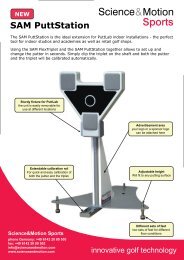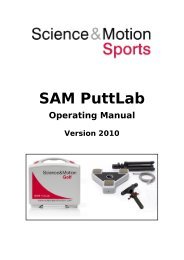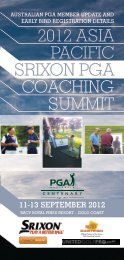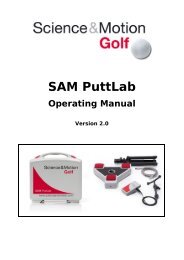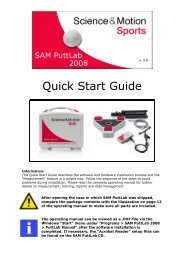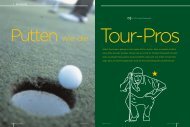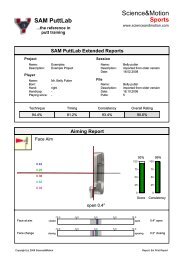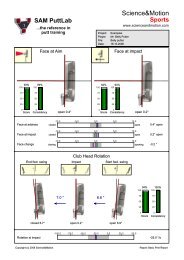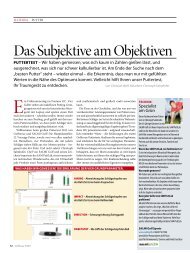SAM PuttLab - Reports Manual - Science & Motion Golf
SAM PuttLab - Reports Manual - Science & Motion Golf
SAM PuttLab - Reports Manual - Science & Motion Golf
Create successful ePaper yourself
Turn your PDF publications into a flip-book with our unique Google optimized e-Paper software.
<strong>SAM</strong> <strong>PuttLab</strong> - <strong>Reports</strong> <strong>Manual</strong><br />
2.4 Alignment bar charts<br />
The bar charts below the graphs provide information on each single putt.<br />
The colored stripes within the bars represent the different putts. These<br />
graphs do not only show the average performance but also the distribution<br />
of the single data values. For high consistency of movement execution the<br />
stripes should be grouped very closely together or should even overlap.<br />
The numbers above the bars correspond to the data scale. In this case the<br />
numbers represent degrees for the alignment. At the left side of the bar the<br />
name of the displayed parameter is shown. The number on the right side of<br />
the bar represents the average data value for this parameter.<br />
The upper two bars show the data for face at address and face at impact.<br />
For this player the data are grouped very closely together which indicates<br />
high consistency of movement execution (see also chapters 2.2 and 0).<br />
The parameter "Face change" shows the change of putter face angle<br />
between address position and impact. For this player the face is closed from<br />
address to impact -0.2 degrees in average which is only a very small<br />
compensation. Even more important, the face change from address to<br />
impact is also very consistent.<br />
This parameter provides additional information on putter face action inside<br />
of the backswing and on sources of inconsistencies at impact. If the face at<br />
impact is inconsistent and face change is inconsistent you should work on a<br />
more smooth and regular putter face during the backswing. On the other<br />
hand, if face at impact is inconsistent but face change is consistent, then the<br />
inconsistencies do more result from inconsistent addressing. Consequently,<br />
you should then work on a more consistent addressing.<br />
Page 11



